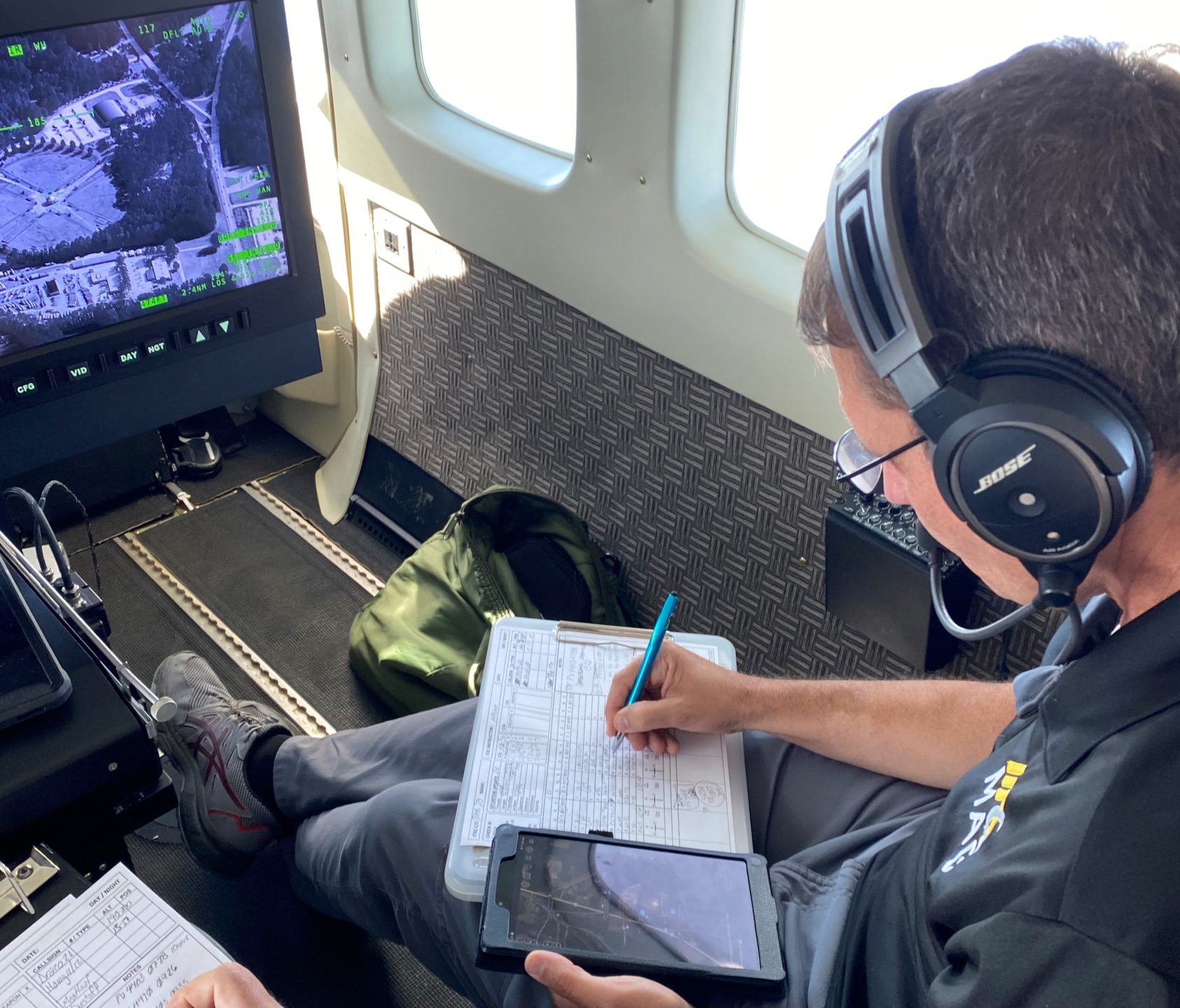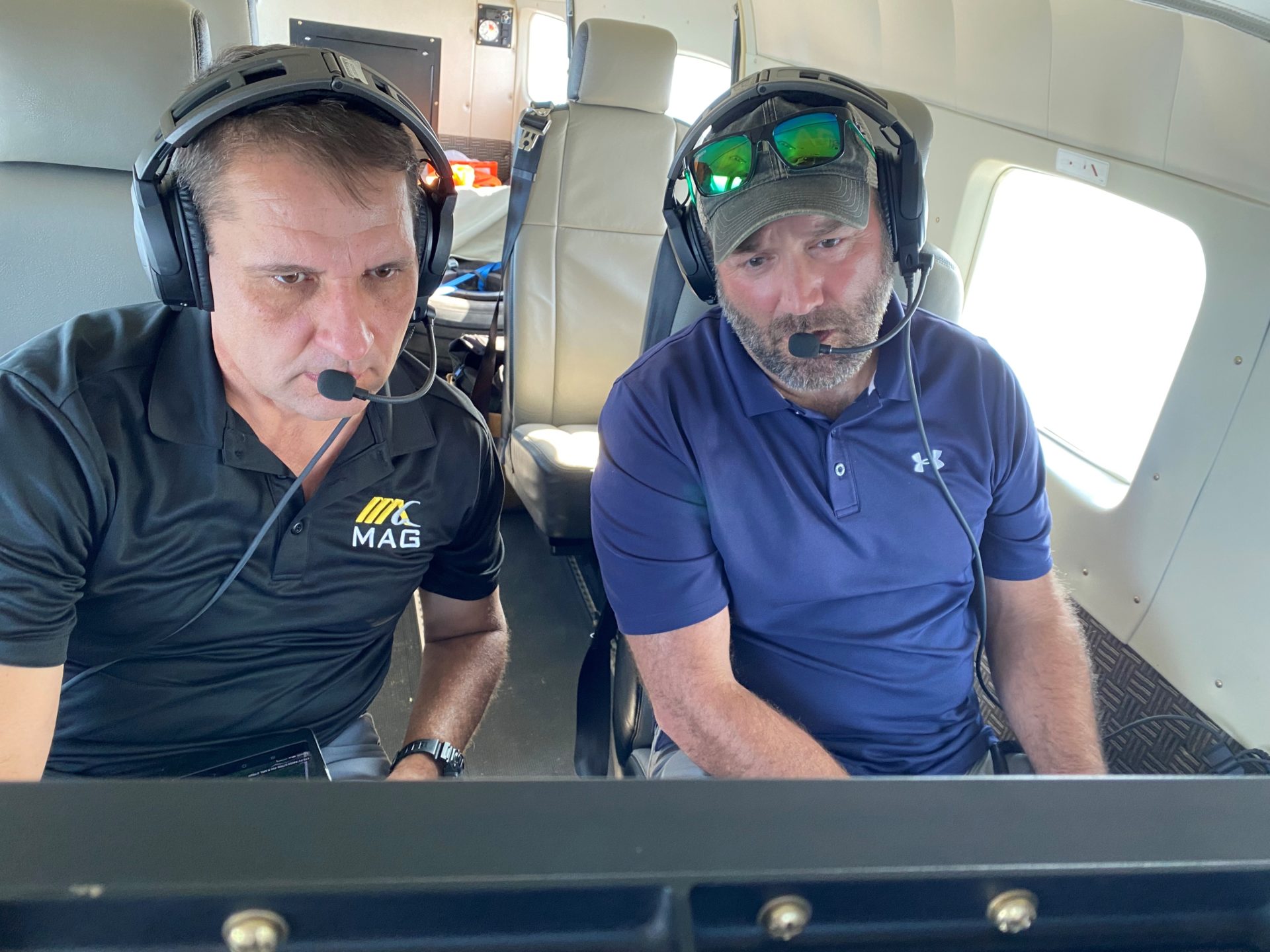
For years MAG has provided Joint Terminal Attack Controller (JTAC) expertise in training, program support, flight support, and live fire exercise support. This work is essential to the success of the JTAC mission. The withdrawal from the Middle East has had a substantial impact on the military, and the loss of combat-experienced JTACs is one of the more notable consequences. Armed with extensive combat experience, MAG’s instructors play a key role in helping the military bridge the experience gap with JTAC training.
JTACs play a critical role in combat operations and are responsible for coordinating the actions of ground forces and air assets to ensure that precision strikes are delivered accurately and safely. Continuity in the JTAC community is important for many reasons. JTACs are highly skilled and experienced personnel who take many years to train. When JTACs leave the service, it takes time and resources to train new JTACs to replace them.
“With the wars in the Middle East coming to an end, the military has been losing a lot of experienced and operational JTACs,” said JTAC Program Manager, Trevor Thomas. “MAG has been able to recruit and hire former JTACs from across the military spectrum. Most, if not all our guys have served in the Special Operations Community in some capacity. Several of our guys are former customers and once they retired, they immediately began their careers with MAG.”
History of JTACs
The history of JTACs can be traced back to World War II when the US Army began to experiment with using forward air controllers to direct CAS strikes. However, it was not until the Vietnam War that JTACs became a regular part of US military operations.
During the Vietnam War, JTACs were used extensively to support ground forces in close combat. They played a key role in the Battle of Ia Drang in 1965, when they helped US forces defeat a much larger North Vietnamese force. JTACs also played a vital role in the air campaign against North Vietnam, helping to destroy enemy supply lines and command centers.
After the Vietnam War, the US military continued to develop its JTAC capabilities, and they have contributed to all major US military operations since, including the Gulf War, the War on Terror, and the wars in Iraq and Afghanistan.
A High Demand for JTACs
The shortage of JTACs is a concern for the military and has been ongoing for several years due to several factors, including:
- High demand for JTACs: JTACs are highly skilled and trained personnel for close air support and other offensive air operations. This demand has increased in recent years as the military has engaged in more complex and challenging operations.
- Rigorous training and certification requirements: JTAC training is very demanding and requires a high level of proficiency in a variety of skills, including air traffic control, fire control, and joint operations. Once a service member passes the JTAC Qualification Course (JQC) they are certified JTACs, but they must maintain their certification through a series of ongoing trainings and evaluations. This makes it difficult to recruit and retain qualified JTACs.
- High attrition rate: JTACs often work in dangerous and demanding environments, which can lead to high attrition rates. Most have served multiple tours of duty in the Middle East or elsewhere.
The Work of JTACs
JTACs are typically forward deployed with ground forces, where they work closely with infantry, armor, and artillery units. They use a variety of sensors and equipment to track the movement of friendly and enemy forces and to identify and designate targets. JTACs also communicate with aircrews using specialized radios and laser designators to guide them to their targets.
JTACs play a vital role in a variety of military operations, including:
- Close air support: JTACs direct CAS strikes to support ground forces in close combat.
- Air interdiction: JTACs direct air strikes against enemy targets in the rear area, such as supply lines and command centers.
- Battlefield air interdiction: JTACs direct air strikes against enemy forces that are engaged in ground combat but are not in immediate contact with friendly forces.
- Air strikes against high-value targets: JTACs direct air strikes against high-value enemy targets, such as generals and other key leaders.
Obstacles Faced by JTACs
JTACs face several obstacles in their work, including:
- The complex and ever-changing battlefield: JTACs must be able to operate effectively in a variety of environments, from dense forests to urban areas. They must also be able to adapt to new threats and tactics.
- The need to coordinate with multiple forces: JTACs must work closely with both ground forces and air crews to ensure the success of their missions. This can be challenging, as each branch of the military has its own procedures and culture.
- The risk of fratricide: JTACs must be extremely careful to avoid directing air strikes against friendly forces. This is a constant challenge, especially when operating in close combat.
While MAG has been training US Air Force personnel, JTACs can be embedded across services in a joint environment. In other words, Air Force JTACs are expected to be able to call in Army, Marine Corps, and naval artillery with just as much lethality as calling upon their own service branch. Training standards are essential for this cross-service interoperability, which brings an even greater importance to MAG’s involvement.
All of this can quickly become more complicated than it might sound, because the JTAC has to organize all of this chaos, making sure that he never requests artillery that will cross the line of flight of the helicopters and aircraft in the area, since that would end with the aircraft being shot down by friendlies.
Despite the challenges they face, JTACs continue to play a vital role in modern warfare. They are highly skilled and experienced professionals who are essential for the success of ground operations and the protection of friendly forces.
MAG Fills a Critical Need for JTAC Training
MAG brings stability to the JTAC community in several ways. MAG provides the military with high-quality JTAC training that prepares them for the challenges they will face in combat. MAG also fills the critical need of annual training and evaluations that allow JTACs to remain certified and deployable. If a JTAC does not maintain their training and certifications, they will lose their JTAC qualification and their ability to serve in the capacity. MAG’s driving force and focus is always the training needs of the JTACs which helps MAG ensure the military has a steady pipeline of qualified JTACs.
Over the years, MAG instructors have trained hundreds of JTACs and the dedicated support they receive from MAG means a lot to the crews and for the instructors who see the JTACs develop as they learn more and progress through training.
“I feel like it’s my duty to pass my knowledge on to the next generation,” Thomas said. “I hope that I can add some tools to their tool belt that can help them in the future. We are a tight-knit group and if there is an issue or a question that one of us has, someone has experienced it before and has the answer.”
MAG also provides the military with contracted aircraft and personnel to support JTAC training. This can include providing air targets for JTACs to practice controlling or providing intelligence, surveillance, and reconnaissance (ISR) support. This helps to reduce the burden on the military’s own resources and allows the military to focus on other priorities.
MAG’s JTAC Training Successes
MAG has been a leading provider of JTAC training services to the US military for many years and has a deep understanding of the skills and knowledge that JTACs need to be successful.
Here are some examples of how MAG Aerospace has helped the military train JTACs:
- In 2018, MAG Aerospace was awarded a contract to provide JTAC and Small Unmanned Aerial System (SUAS) Program Managers (PM) for all CONUS and OCONUS AFSOC Special Tactics Squadrons.
- In 2020, MAG Aerospace launched its Kinetic Strike Training Program (KSTP), which provides a comprehensive training program for JTACs and other personnel who support close air support operations.
- In 2023, MAG was awarded the Joint Terminal Attack Controller (JTAC) Program Support task order to continue their support of the 1st Special Forces Command (A) JTAC Program. MAG will provide JTAC expertise in training, program support, flight support, and live fire exercise support.
MAG’s JTAC training has become known for providing high-quality training that is realistic and challenging. In part, because they boost a room full of experienced JTACs who have been there and done it. Providing an invaluable asset to the military, the personnel being trained, and ultimately the security of the nation. MAG’s training programs combined with their experience play an important role in ensuring the U.S. military has the best JTACs in the world.
Choose MAG’s JTAC Training
MAG Aerospace provides high-quality training to Joint Terminal Attack Controllers (JTACs). MAG’s JTAC training program is designed to prepare students for the rigorous demands of the job and to ensure that they are equipped with the skills and knowledge they need to be successful.
MAG’s JTAC training services include:
- Classroom instruction: MAG instructors teach JTACs the skills they need to control close air support and other air operations. This includes instruction on air traffic control, fire control, and joint operations.
- Simulator training: MAG uses simulators to provide JTACs with realistic training in a variety of scenarios. This allows JTACs to practice their skills without the risk of danger.
- Live-fire training: MAG provides JTACs with live-fire training opportunities. This allows JTACs to practice their skills in a real-world environment.
While the military is taking a few steps to address the shortage of JTACs, the shortage is expected to continue in the near future, making MAG’s involvement and ability to train JTACs even more critical.
Over the last couple of decades, we have seen how critical experienced military personnel are to the mission. They bring a wealth of knowledge, skills, and understanding that is essential to success. MAG’s Special Mission Training team takes a great deal of pride in taking all their experience and instilling it in today’s JTACs knowing they helped train personnel who are still deploying to places worldwide and conducting ongoing operations.



